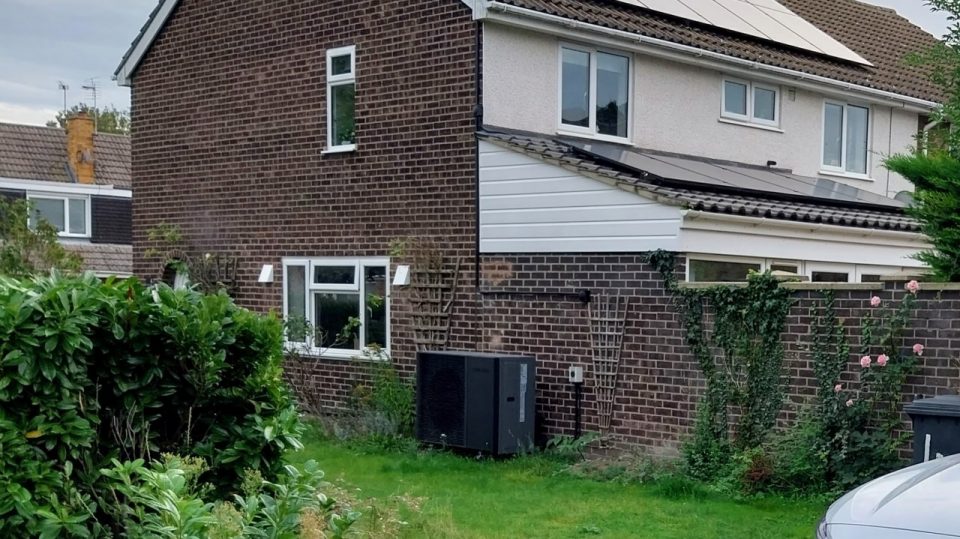Several weeks ago, a good friend of my wife, who’s taken on a house in Beccles that’s a bit rough around the edges, came by for a visit. Those who know me are well aware that I can hardly stop talking about renewable energy, especially heat pumps — and that’s exactly what we ended up discussing for most of his visit. He’s looking to make his new place more comfortable, slash energy bills and cut down on carbon emissions as soon as he can. I was struck by his readiness to embrace certain lifestyle changes to reach these goals, and it was refreshing to inform him that such sacrifices weren’t necessary.
In response to his email, I’ve put together a reply that I hope is straightforward and insightful. If you think my advice missed the mark or if you have different views, feel free to let me know in the comments — just keep it friendly, please. I always find it helpful to address real concerns and queries about transitioning to a heat pump-based heating system.
Wife’s Friend: Firstly – thanks for the other day. The burgers were top-notch (what brand were they from again?), and the relish and chips weren’t half bad either. It was nice to hang out, even with my hangover the next morning.
Jez: It was our pleasure! Those were Beyond Meat Beyond Burgers. We like them, though they’re a bit on the expensive side so we wait for offers before stocking up.
As for your heat pump questions, I’ll start with some basics about living with them and the physics involved… The crux is, a heat pump system that’s well-designed, installed and adjusted means no lifestyle downgrades — in fact, it typically improves overall home comfort and hot water availability. Heat pumps lose about 3% efficiency for every degree Celsius increase in the output temperature. This is vital for heat pump owners to remember. The temperature in question here is the water temperature exiting the heat pump — not to be confused with other temperatures that may seem relevant.
Here’s how you make a heat pump heat your home efficiently and comfortably:
- Assess Peak Heat Loss: Determine the maximum heat loss for each room and the entire house. Smaller rooms might lose a few hundred watts, large rooms might go up to 1kW, and in a poorly insulated home, the biggest rooms might see losses of about 2kW. The entire house usually averages around 7kW but could reach 14kW for larger, less insulated homes. ‘Peak’ refers to the coldest times, say -3°C outside.
- Choose the Right Heat Pump: It should be able to cover your total heat needs at a minimum of -3°C outside.
- Select Proper Heat Emitters: Usually, radiators or underfloor systems that can emit sufficient heat at water temperatures ideally not exceeding 45°C for better efficiency.
- Run it ‘Weather Compensated’: Instead of blasting at 45°C constantly, the system adjusts to the milder temperatures to run more efficiently, which means it operates longer at a lower intensity and maintains a warm environment. Resist the urge to switch off the heating when the house is empty. It might seem cost-effective, but it actually leads to higher costs and reduced comfort when you ramp up the heat again.
Wife’s Friend: What about the water temperature for baths? I’ve heard heat pumps might not get as hot as traditional boilers, and I do enjoy a steaming bath weekly.
Jez: Our system gets the hot water up to 48°C, which is generally too hot for most people to bathe in. And remember, heat pumps can run hotter when heating water, up to 70-75°C if necessary.
Wife’s Friend: And water pressure? You know the area we’re in is pretty flat. I’m worried about losing pressure if we remove the tank from the attic.
Jez: Usually, we’d switch to a mains pressurized hot water system when installing a heat pump, which significantly improves flow rates. If your current setup is gravity-fed, changing it will involve some additional costs.
Wife’s Friend: I’ve been mulling over where to place the heat pump, where the tank would go, the costs involved, and if there are any grants available.
Jez: Typically, you’d want the heat pump close to the house to keep installation costs down. It requires a little space around it for air intake and servicing. The water tank should ideally be on the other side of the wall from the heat pump and near hot water outlets to reduce pipework. Costs for installations vary from £8k to £18k, but the government offers a £7.5k grant through the ‘Boiler Upgrade Scheme’ provided you meet certain conditions, like having an up-to-date Energy Performance Certificate (EPC) and no boiler post-installation.
Wife’s Friend: I’m also considering what insulation upgrades to prioritize. Would loft insulation and blocking the chimneys be the right move?
Jez: Absolutely, regardless of your heating system. Unaddressed, these areas will hike up your bills and carbon footprint. Loft insulation is particularly important for qualifying for the government grant. It’s a bit of a hassle since you’ll need to update your EPC after making these changes, but it’s worth it to tap into that grant money.
Feel free to reach out if there’s anything else you’re curious about!



I’d like to hear a bit more about the cost of heat pumps. There is barely any mention of the high cost, only how green and clean they are . Winter running costs are prohibitive for the average family. ( £400 per month in our case for a highly insulated 4 bed new build) . There are also many restrictions on the siting of what are in effect large aircon units.
Not to mention lack of qualified fitters or anyone interested in maintenance.